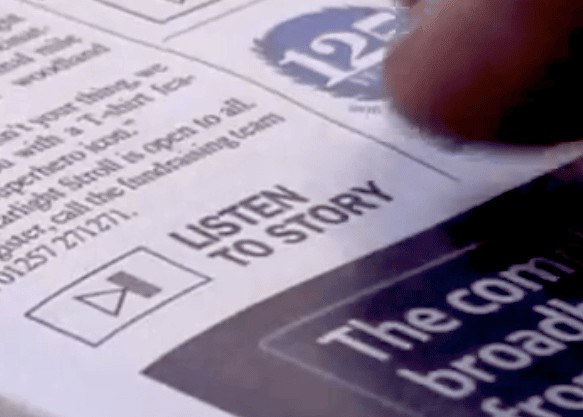
Lots of people are trying to bridge the divide between paper and the internet. Some efforts include augmented-reality playthings that enliven pages and QR codes that introduce hyperlinks to print, while many expect e-readers will evolve in to flexible, hi-res, connected digital “paper.”
But what if the printed word could become digital today? That’s what a project called Interactive Newsprint is promising.
An eight-year-old Cambridge, UK, company called Novalia, working with the Universities of Central Lancashire, Dundee and Surrey, is deploying its electronics-enabled paper concept toward newspapers.
A demo edition of Johnston Press’ Lancashire Evening Post includes printed “buttons” that, when pressed, play audio readings of stories; plus Facebook likes, story ratings and votes.
“This is going to send a lifeline to the print element of the news industry by being able to connect a sheet of paper to the internet,” says University of Central Lancashire journalism school researcher Paul Egglestone.
“Being able to place the paper in the middle of the internet of things opens up a whole new ballpark of the ways that we can tell stories and collect data — who’s holding the paper, how are they interacting?”
The technology works with conductive inks that enable capacative touch, but full details are sketchy.
Project participants also say the technology can be used to print interactive advertisements. Interactive Newsprint collects click counts and engagement time for publishers and marketers to analyse.
Dundee University product design researcher Jon Rogers says: “For pretty much the first time, in a scaleable and manufacturable way, we’re going to connect the internet to paper. When you start to connect that to news, we’re in a goldmine zone.”
The idea could also be used for interactive restaurant menus or posters.
Escalating costs for regular newsprint is one reason for structural pressures in news publishing today. Whether newspapers adopt electronics-enabled paper that would likely be even more expensive remains to be seen.
The technology may be especially useful to magazine publishers, which have long sought to print display ads that are as engaging as possible.